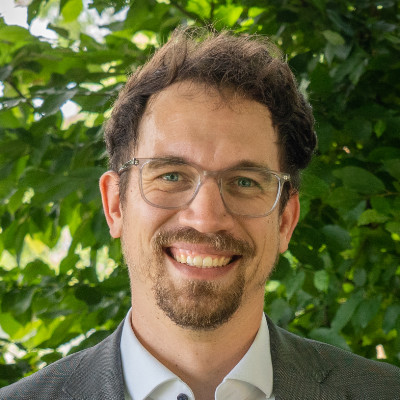Heat-to-Fuel
Zusammenfassung:
Heat-to-Fuel ist ein im Rahmen des EU Horizon 2020 Forschungsprogramms finanziertes Projekt, das von 14 Partnern aus ganz Europa durchgeführt wird und darauf abzielt, die nächste Generation von Technologien zur Herstellung von Biokraftstoffen bereitzustellen, die die Dekarbonisierung des Verkehrssektors unterstützen. Das vom österreichischen Forschungsinstitution Güssing Energy Technologies (GET GmbH) koordinierte Projekt startete im September 2017 und wird vier Jahre dauern. Die Heat-to-Fuel Forschungspartner, aus Industrie und Wissenschaft, verfügen über mehr als 100 Jahre Branchenexpertise und Erfahrung in der Herstellung von Biokraftstoffen und bringen die führenden Demonstrationsanlagen in das Projekt ein.
In Zahlen zielt Heat-to-Fuel darauf ab:
- Kostengünstige Technologien zu liefern, die Biokraftstoffpreise unter 1 € pro Liter erzielen. Dies wird durch eine Kostenreduzierung von 20% bei den Produktionsprozessen für Biokraftstoffe erreicht.
- Erhöhen Sie die Qualität des Biokraftstoffs, was zu einer Reduzierung der Treibhausgasemissionen im Lebenszyklus um 5% führt.
- Leistet einen Beitrag zur Erreichung der Ziele der EU-Energiesicherheit, indem der Anteil der zur Energieerzeugung verwendeten lokalen Ressourcen erhöht und damit die Abhängigkeit der EU von Energieimporten verringert wird.
- Unterstützung der lokalen Wirtschaft durch Schaffung von 80 bis 100 direkten und 250 indirekten Arbeitsplätzen bei jedem Bau einer neuen Heat-to-Fuel-Bioraffinerie.
- Beweisen Sie die technologische Machbarkeit und wirtschaftliche Wertigkeit des Konzepts, das als Katalysator für zukünftige Industrieanlagen fungiert.
- Diese übergeordneten Ziele werden durch die Integration neuartiger Technologien in Heat-to-Fuel sowie durch innovative Aktivitäten in den Bereichen Design, Modellierung, Entwicklung von Hardware und Prozessen, Testen und Lebenszyklusanalyse eines vollständig integrierten Systems erreicht.
- Am Ende des Projekts wird das erworbene Know-how eine Skalierbarkeit auf Demonstrationsebene (vor der Kommerzialisierung) ermöglichen, die für die nächsten Generationen nachhaltiger Biokraftstofftechnologien wesentlich ist.
Aufgaben und bisherige Ergebnisse von BEST innerhalb von Heat-to-Fuel
Die Hauptaufgabe der BEST GmbH besteht in der Planung, Errichtung und dem Betrieb der weltweit ersten APR-Prozessdemonstrationsanlage (aqueous phase reforming – Reformierung in wässriger Phase) auf der Grundlage der im Labormaßstab erzielten Forschungsergebnisse von POLITO. Das verwendete AP-Prozesswasser ist ein Nebenprodukt des HTL-Verfahrens (hydrothermale Verflüssigung). Während des APR-Prozesses werden sowohl Wasserstoff als auch Nebenprodukte (z.B. CO2) gebildet. Der bereitgestellte Wasserstoff wird in der gekoppelten FT-Prozessroute verwendet, um das Wasserstoff zu CO-Verhältnis vor dem Syntheseschritt einzustellen. Im Rahmen des Heat-to-Fuel-Projekts wird ein kompakter mikro-strukturierter Fischer-Tropsch-Reaktor (bereitgestellt von den Projektpartnern Atmostat/CEA) zur Herstellung von Fischer-Tropsch-basierten Treibstoffen verwendet.
BEST GmbH konzentriert sich im Projekt Heat-to-Fuel auf die Demonstration einer weltweit einzigartigen Prozesskonfiguration (APR und FT) für die Herstellung fortschrittlicher Kraftstoffe unter Verwendung von HTL sowie Fischer-Tropsch-basiertem Prozessabwasser zur Bereitstellung von Wasserstoff für den Syntheseschritt.

Projektvolumen
EUR 5.9 Mio. (Volumen BEST: EUR 515.000,--)
Projektlaufzeit
2017-09-01 - 2022-12-31
Projektpartner
- BEST GmbH - Area 2 (Fluidized Bed Conversion Systems), Austria
- Güssing Energy Technologies, Austria
- BETA Renewables, Italy
- IREC, Spain
- IChPW, Poland
- RECORD, Italy
- POLITO, Italy
- CRF, Italy
- CEA, France
- Johnson Matthey, United Kingdom
- Atmostat, France
- Skupina Fabrika, Slovenia
- R2M, Spain
Ansprechperson
Area Management

Matthias Kuba
matthias.kuba@best-research.eu

Gerald Weber
gerald.weber@best-research.eu

